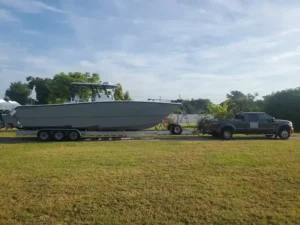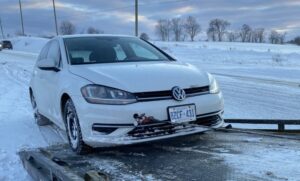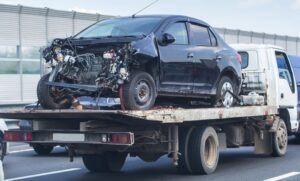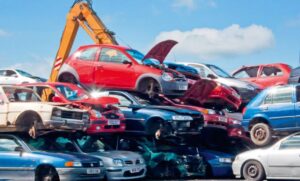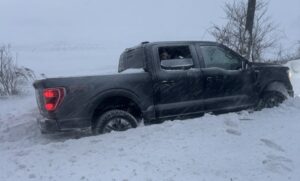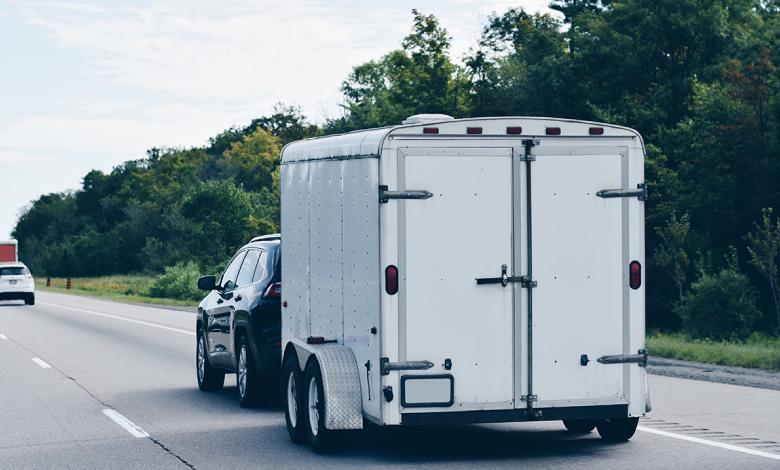Driving in Ontario, especially in and around the Greater Toronto Area and communities like Aurora, often involves towing. Whether you are hitching up a boat for a weekend on Lake Simcoe, taking a camper to a provincial park, or hauling a utility trailer for a home project, you are participating in an activity governed by a specific and important set of rules. These trailer laws are not suggestions; they are legal requirements under Ontario’s Highway Traffic Act (HTA).
Welcome to the Pars Towing blog. As your local experts in towing and roadside safety in the Aurora region, we have seen firsthand what happens when these laws are misunderstood or ignored. The consequences can range from expensive fines and demerit points to catastrophic equipment failure and serious accidents. Many drivers assume that if their truck can pull the weight, they are good to go. The reality is far more complex, involving driver licensing, specific equipment, and strict rules of the road.
- Learn More >>>>boat and trailer towing service
What is a Trailer?
Under the Highway Traffic Act, the definition of a “trailer” is broad. It is not just a utility trailer or a boat trailer. The law defines it as any vehicle that is “at any time drawn upon a highway by a motor vehicle, except an implement of husbandry, another motor vehicle or any device or apparatus not designed to transport persons or property, temporarily drawn, towed or carried by a motor vehicle.”
This includes:
- Utility trailers
- Boat trailers
- Travel trailers (campers)
- Fifth-wheel trailers
- Livestock trailers
- Enclosed cargo trailers
- Even a vehicle being towed using a tow bar or dolly (a “towed vehicle”)
For the most part, the laws apply based on weight and dimensions, not on the specific type of trailer you are pulling.
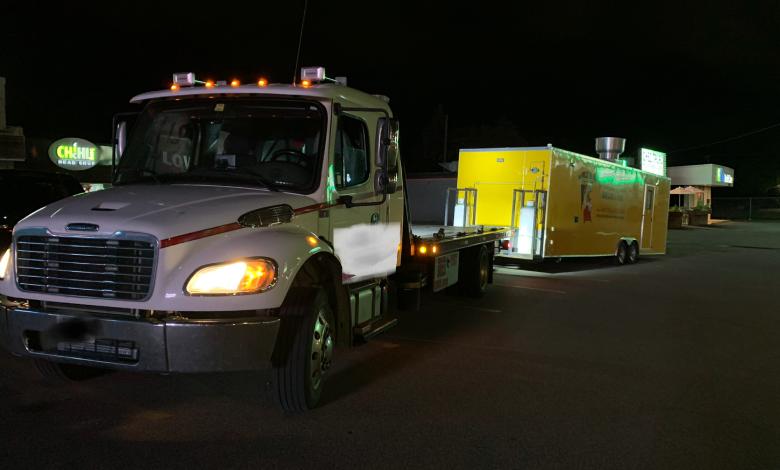
- Learn More >>>>Towing Capacity For Each Truck
Driver’s Licence Requirements
One of the most common points of confusion regarding trailer laws is licensing. What can you legally tow with a standard Ontario G-class licence?
A G-class licence allows you to drive a car, van, or small truck, and tow a trailer, provided both of the following conditions are met:
- The gross weight of the trailer (the trailer itself plus all its cargo) does not exceed 4,600 kilograms (10,141 pounds).
- The Gross Combined Weight Rating (GCWR) of the entire rig—the truck plus the trailer—does not exceed 11,000 kilograms (24,250 pounds).
This covers the vast majority of recreational towing. If your trailer alone weighs more than 4,600 kg, you legally need a Class A licence. The Class A licence is the commercial truck licence, and it removes that 4,600 kg trailer limit.
There is one major exception to this rule, which is a significant benefit for RV users. A G-class driver can legally tow a fifth-wheel trailer or a “house” trailer that weighs more than 4,600 kg, but only if:
- The combined weight of the truck and trailer is still under 11,000 kg.
- The trailer is attached to the truck by a fifth-wheel hitch (meaning no “tag-along” or bumper-pull trailers over the limit).
- The truck is a pickup truck, not a larger commercial vehicle.
If your total combined weight (truck + trailer) exceeds 11,000 kg, you need a Class A licence, with no exceptions.
- Learn More >>>>Boat and trailers towing Ajax
Trailer Brakes: The Critical Safety Law
After licensing, the most important law relates to brakes. Your tow vehicle’s brakes are designed to stop the tow vehicle, not an extra 5,000 pounds of trailer pushing it from behind.
In Ontario, the law is clear: A trailer must have its own independent braking system if its gross weight is 1,360 kilograms (approximately 3,000 pounds) or more.
If your boat and trailer, or your camper, or your cargo trailer (fully loaded) weighs 3,000 pounds or more, it is illegal to tow it without functional trailer brakes.
There are two common types:
- Surge Brakes: These are hydraulic brakes found most often on boat trailers. When you apply the brakes in your truck, the trailer’s momentum “surges” forward, compressing a master cylinder on the trailer tongue, which in turn applies the trailer’s brakes.
- Electric Brakes: These are more common on travel trailers and larger utility trailers. They require a special “electric brake controller” to be installed in the cab of your tow vehicle. This controller senses when you apply the brakes and sends a proportional electric signal back to the trailer’s brakes.
The Breakaway Brake Requirement
For trailers equipped with brakes, there is another legal requirement: a breakaway brake system. This is a small, self-contained system with a battery on the trailer. A steel cable, called the breakaway cable, runs from this system to the tow vehicle.
If the trailer ever completely detaches from the truck (a catastrophic failure of the hitch and chains), this cable pulls a pin, activating the trailer’s brakes at full power, bringing the runaway trailer to a stop. This cable must be attached to the tow vehicle’s frame or a permanent part of the hitch receiver, not to the hitch ball or the safety chains.
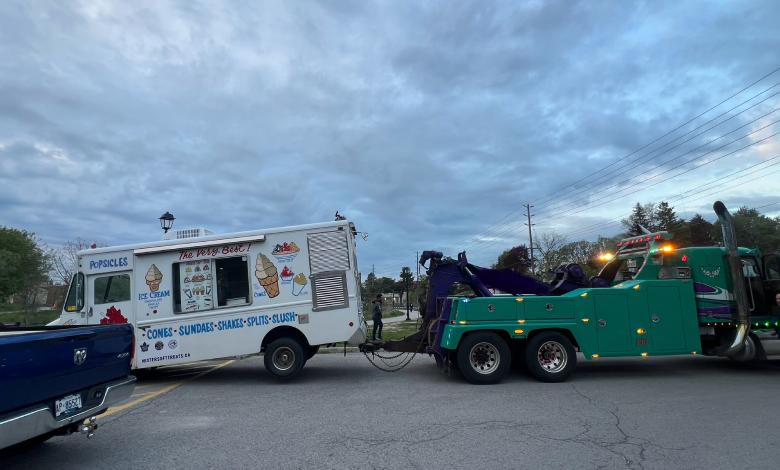
- Learn More >>>>Boat and trailers towing Pickering
The Connection: Hitches and Safety Chains
The physical connection between your vehicle and the trailer is subject to strict safety laws.
Hitches
The HTA states that your hitch must be strong enough for the load you are pulling and must be in good, safe condition. Hitches are rated in five classes, from Class I (for very light loads) to Class V (for heavy-duty towing). You must ensure your hitch, your ball mount, and the tow ball itself are all rated for a weight that exceeds the total weight of your loaded trailer.
Crucially, the trailer coupler must match the size of the tow ball. A 2-inch coupler must go on a 2-inch ball. Never put a 2-5/16 inch coupler on a 2-inch ball; it will feel like it fits, but it can and will pop off on the first big bump.
Safety Chains
Safety chains are your last line of defence. They are not optional; they are legally required on all trailers. Ontario law requires “two separate means of attachment” in addition to the hitch itself.
These two chains must be strong enough to hold the entire weight of the trailer if the hitch fails. They must be attached to the frame of the tow vehicle (or the designated loops on its hitch receiver) and to the trailer frame.
Most importantly, the chains must be crossed in an “X” pattern under the trailer tongue. This is not a preference; it is a critical safety practice. If the hitch fails and the tongue drops, the crossed chains will form a “cradle” to catch the tongue, preventing it from digging into the pavement and causing a complete loss of control. The chains should have enough slack to allow for sharp turns, but not so much that they drag on the ground.
Lights and Reflectors
Your trailer is an extension of your vehicle, and it must communicate your intentions to other drivers. This means all its lights must be fully functional. Your trailer must be equipped with:
- Tail Lights: Two red lights at the rear that turn on with your vehicle’s headlights.
- Brake Lights: Two red lights (can be the same as the tail lights) that illuminate when you press the brake pedal.
- Turn Signals: Two lights (red or amber) that flash when you activate your turn signal.
- Licence Plate Light: A white light that illuminates the trailer’s licence plate.
Clearance Lights
If your trailer is over a certain size, additional lights are required. The key dimension is width. If your trailer is 2.05 meters (80 inches) wide or wider, it legally requires:
- Two amber clearance lights at the front, as high and as wide as possible.
- Two red clearance lights at the “intermediate” side (mid-point of the trailer).
- Two red clearance lights at the rear, as high and wide as possible.
- Red reflectors at the rear.
All these lights must be in working order. A non-functional brake light or turn signal is a magnet for a police inspection and a fine, and it is a major safety hazard.
- Learn More >>>>How do I get a tow truck?
Registration, Plates, and Insurance
In Ontario, every trailer, even a small utility trailer, must be registered with the Ministry of Transportation (MTO) and must display its own licence plate. You get this plate and an “ownership” permit (the green slip) from ServiceOntario. This plate does not require an annual sticker like a car plate, but it must be visibly displayed on the back of the trailer and illuminated by a light.
If you build a homemade trailer, you must have it inspected and registered with the MTO, at which point they will assign it a Vehicle Identification Number (VIN) so it can be legally plated.
For insurance, your auto policy typically extends liability coverage to your trailer while it is attached to your vehicle. However, this does not usually cover the trailer itself for damage or theft. You often need a separate “rider” or policy to insure the value of the trailer and its contents, especially for expensive campers or boats.
Dimensions: How Big is Too Big?
Ontario’s trailer laws are very specific about the maximum size your rig can be.
- Maximum Width: 2.6 meters (8 feet, 6 inches). This is the width of the trailer or its load, whichever is greater.
- Maximum Height: 4.15 meters (13 feet, 7 inches) from the road surface to the top of the trailer or its load.
- Maximum Length (Single Trailer): 12.5 meters (41 feet) from the hitch to the rearmost point.
- Maximum Length (Combined): 23 meters (75 feet, 5 inches) for the entire combination of the truck and trailer.
If your trailer or load exceeds these dimensions, you cannot legally be on the road without a special “oversize load” permit, which comes with its own set of rules (like special signs and escort vehicles).
On-the-Road Rules of Operation
Once you are hitched up and all your equipment is legal, your driving behaviour must change.
Towing Mirrors
The law states you must have a clear view of the road behind you and to the sides. If your trailer is wider than your tow vehicle (which almost all travel trailers and large boat trailers are), your factory-installed mirrors are not sufficient. You are legally required to install and use “towing mirrors” or mirror extensions that allow you to see past the sides of your trailer.
Passengers
It is strictly illegal for any person to be in or on a trailer while it is being towed. This includes travel trailers, fifth-wheels, boat trailers, or utility trailers. All passengers must be inside the tow vehicle.
Securing Your Load
You are 100% responsible for everything on or in your trailer. The HTA has “insecure load” provisions that carry heavy fines. Your cargo must be tied down, strapped, or otherwise secured so that no part of it can shift, sway, or fall off the trailer.
For loose materials like gravel, soil, or scrap, you are legally required to cover the load with a tarp that is securely fastened down. An unsecured load that causes an accident or property damage can open you up to immense liability.
Speed
While Ontario does not have a separate, lower speed limit for vehicles towing trailers (unlike some jurisdictions), it is a common-sense and safe practice to drive slower than the posted limit. We recommend staying at or below 90-100 km/h on 400-series highways. Your stopping distance is dramatically increased, your vehicle is less stable in high winds, and a sudden-stop or swerve is far more dangerous.
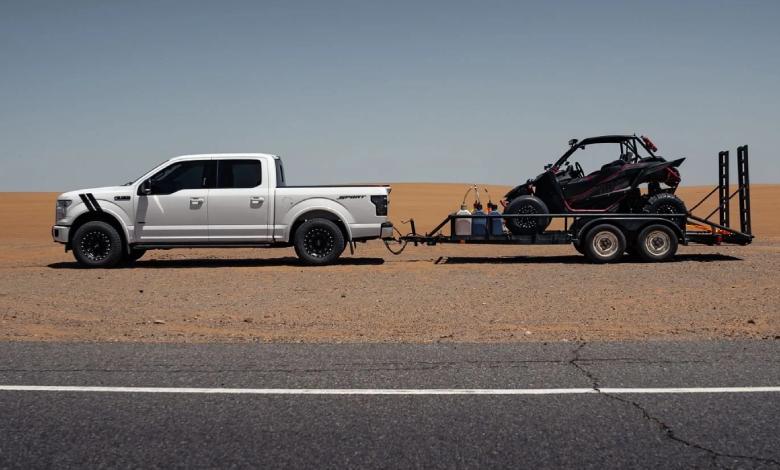
- Learn More >>>>Boat and trailers towing clarington
Annual Safety Inspections (Yellow Stickers)
This is a point of confusion for many. Do personal-use trailers need an annual safety inspection?
The answer is generally no, but it depends on weight.
- Personal Use: If you are towing a personal-use trailer (boat, camper, etc.) that is not for commercial purposes, you do not need an annual safety inspection, regardless of its weight.
- Commercial Use: If the trailer is used for commercial purposes (e.g., a landscaping trailer, a construction trailer) and its gross weight (trailer plus its load) exceeds 4,500 kg, it must have a valid annual safety inspection (the yellow sticker).
- The Truck: Furthermore, if your truck’s Gross Vehicle Weight Rating (GVWR, found on the door sticker) is over 4,500 kg, it needs a yellow sticker, regardless of what it’s towing.
When You Need Professional Help
This guide covers the essentials of Ontario’s trailer laws. As you can see, towing is a serious responsibility. But even the most prepared driver can face a problem. A trailer tire can blow out on Highway 404, a wheel bearing can seize on the way to the cottage, or you could be involved in an accident.
When that happens, you do not just need a tow truck; you need a towing company that understands the complexities of trailers. At Pars Towing, we are equipped to handle these exact situations. Our fleet includes flatbed trucks and heavy-duty wreckers capable of safely towing not only your disabled truck or SUV but your trailer as well. Whether it is a boat, a camper, or a utility trailer, we have the expertise to recover your entire rig safely and get you off the side of the road.
Serving Aurora and all of Ontario, we are your partners in roadside safety. Understanding these trailer laws is your job as a driver. Being there for you when things go wrong is ours.
Conclusion: Safety Through Compliance
Ontario’s trailer laws are not designed to be punitive. They are designed to prevent the worst from happening. They ensure that every rig on the road has the proper safety connections, functional brakes and lights, and a licensed driver at the wheel.
Before every trip, take five minutes to do a walk-around.
- Check your hitch, latch, and pin.
- Cross your safety chains.
- Connect your wiring and test your lights (brakes, signals, running lights).
- Check your trailer tire pressure.
- Ensure your load is secure.
By following these laws and best practices, you ensure that your journey will be as safe and enjoyable as your destination. Drive carefully, be patient, and respect the unique challenges that come with towing.

